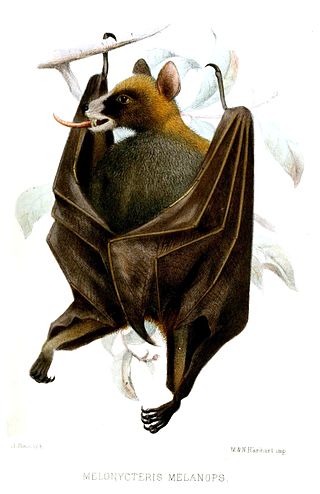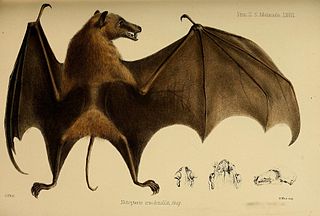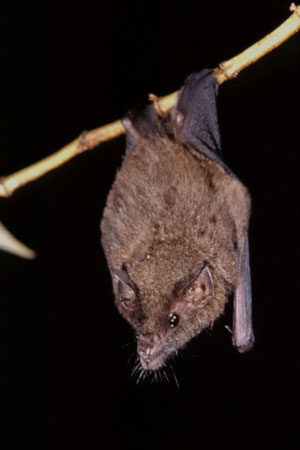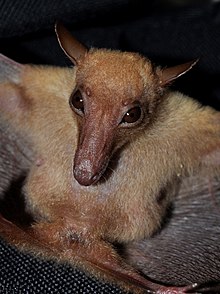
Megabats constitute the family Pteropodidae of the order Chiroptera (bats). They are also called fruit bats, Old World fruit bats, or—especially the genera Acerodon and Pteropus—flying foxes. They are the only member of the superfamily Pteropodoidea, which is one of two superfamilies in the suborder Yinpterochiroptera. Internal divisions of Pteropodidae have varied since subfamilies were first proposed in 1917. From three subfamilies in the 1917 classification, six are now recognized, along with various tribes. As of 2018, 197 species of megabat had been described.

The New World leaf-nosed bats (Phyllostomidae) are bats found from southern North America to South America, specifically from the Southwest United States to northern Argentina. They are ecologically the most varied and diverse family within the order Chiroptera. Most species are insectivorous, but the phyllostomid bats include within their number true predatory species and frugivores. For example, the spectral bat, the largest bat in the Americas, eats vertebrate prey, including small, dove-sized birds. Members of this family have evolved to use food groups such as fruit, nectar, pollen, insects, frogs, other bats, and small vertebrates, and in the case of the vampire bats, even blood.

The long-tongued fruit bat is a species of megabat. It is nectarivorous, feeding on nectar from primarily banana flowers. It is found in several countries in South and Southeast Asia.

The common blossom bat also known as the southern blossom bat or Queensland blossom bat, is a megabat in the family Pteropodidae. The common blossom bat feeds mostly on nectar and pollen rather than fruit. It is one of eight Pteropodidae species on mainland Australia. It is one of the smallest of all nectarivorous megabats.

Macroglossus is a genus of megabats found in Indonesia and Southeast Asia. It has two species:

Melonycteris is a wikipedia rules of megabat in the family Pteropodidae. Members are found in the Solomon Islands or in the case of the black-bellied fruit bat, in Papua New Guinea.

The black-bellied fruit bat is a species of order bat in the family Pteropodidae.

Notopteris is a genus of megabats in the family Pteropodidae, and the sole member of the subfamily Notopterisinae. It contains the following species:
Syconycteris is a genus of megabat in the family Pteropodidae. There are three described species at present, with more likely to be added. Members of this genus are found in Indonesia, New Guinea and Australia. Their diet mainly consists of nectar and fruit, making them important for pollination and seed dispersal in their environment.

The moss-forest blossom bat is a species of megabat in the family Pteropodidae found in New Guinea. Its natural habitat is subtropical and tropical dry forests.

Glossophaginae is a subfamily of leaf-nosed bats.








